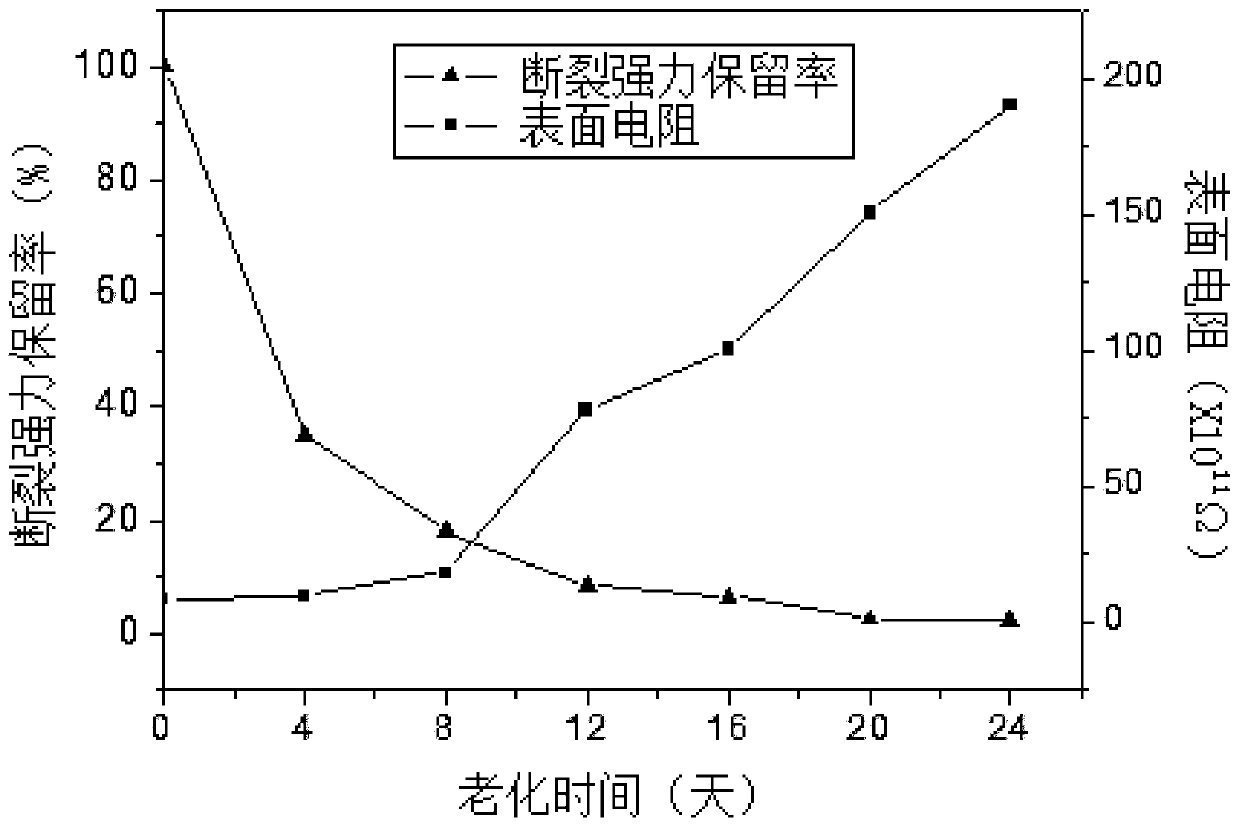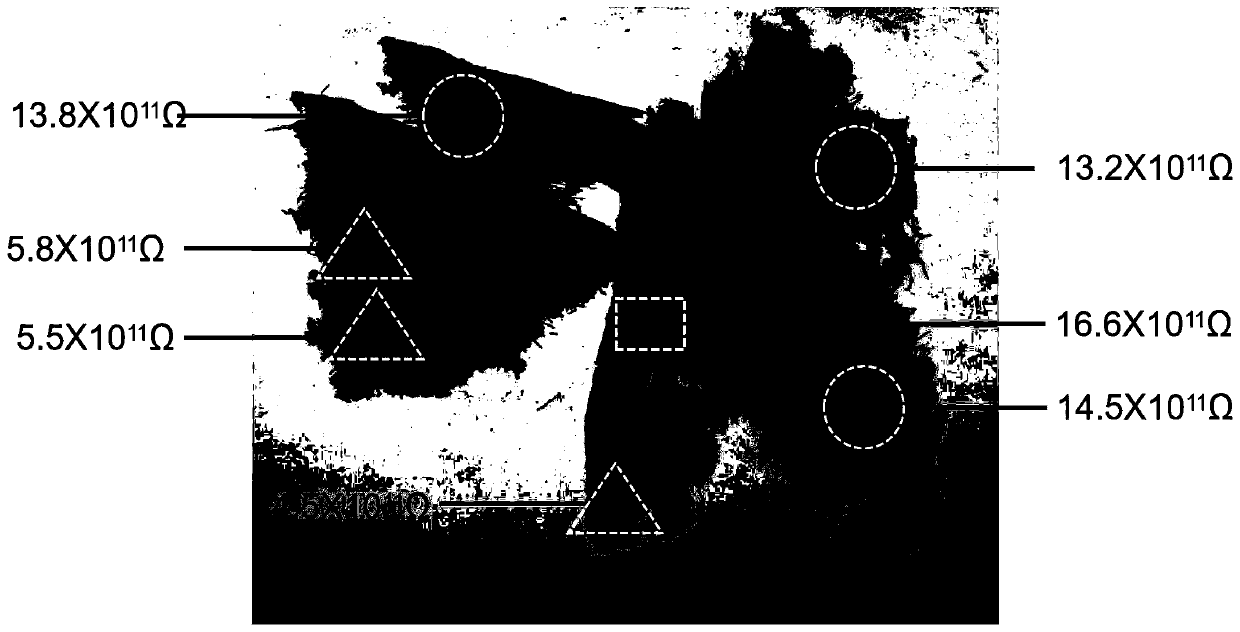Surface resistance evaluation method for aging degree of ancient textile cultural relics
A technology of surface resistance and aging degree, applied in the field of cultural relics detection, can solve problems such as non-destructive description of aging degree
- Summary
- Abstract
- Description
- Claims
- Application Information
AI Technical Summary
Problems solved by technology
Method used
Image
Examples
Embodiment 1
[0043] 1) A 99.5% pure copper backing material with a thickness of 1mm is placed under the modern simulated aging wool fabric sample, the surface of the sample is flat and fits the upper surface of the backing material; the overall dimensions of the pure copper backing material are length: 6cm, 4cm wide. The modern simulated aging wool fabric sample is to cut the modern wool fabric into strips of 20cm x 5cm, put them flat on a porcelain tray, and then put them into an oven at 150°C, and the tray is fixed on the same layer. In order to make the treatment effect of the aging sample more stable, turn it over every other day and move it in parallel. Take out samples at 4d, 8d, 12d, 16d, 20d, and 24d respectively to obtain heat-aged samples;
[0044] 2) Place the two electrodes of the calibrated resistance tester on the surface of the modern simulated aging wool fabric sample, measure the surface resistance between the two electrodes, read the value and record it;
[0045] 3) Acc...
Embodiment 2
[0049] 1) A 99.5% pure copper backing material with a thickness of 2mm is placed under the hemp cultural relic fragments, and the surface of the cultural relics is flat and attached to the upper surface of the backing material; the overall dimensions of the pure copper backing material are length: 6cm, 3cm wide. The fragments of linen cultural relics mentioned were unearthed in Henan, about 2,700 years ago.
[0050] 2) Use a surface resistance meter to gently place it on the surface of the cultural relic fragment to measure the surface resistance between the two conductive strips, read the value and record it;
[0051] 3) According to the surface resistance data, compare the surface resistance value range of the modern analog samples with different aging degrees of linen fabrics, and judge the aging state of the cultural relics;
[0052] The surface resistance value of final embodiment 2 is as figure 2 As shown, the cultural relic fragment is woven with two different colors...
Embodiment 3
[0054] 1) Place a 99.9% pure silver backing material with a thickness of 0.5mm under the woolen cultural relic fragment, and the surface of the cultural relic is flat and attached to the upper surface of the backing material; the outer dimension of the pure silver backing material is length: 5cm, 4cm wide. The said fragments of woolen cultural relics are waist garments unearthed in Xinjiang, dated to the Xiaohe period about 3,800 years ago.
[0055] 2) Use a surface resistance meter to gently place it on the surface of the cultural relic fragment to measure the surface resistance between the two conductive strips, read the value and record it;
[0056] 3) According to the surface resistance data, compare the surface resistance value range of the modern analog samples with different aging degrees of linen fabrics, and judge the aging state of the cultural relics;
[0057] The surface resistance value of final embodiment 3 is as image 3 As shown, the waistcoat is woven from w...
PUM
| Property | Measurement | Unit |
|---|---|---|
| width | aaaaa | aaaaa |
Abstract
Description
Claims
Application Information
 Login to View More
Login to View More - R&D
- Intellectual Property
- Life Sciences
- Materials
- Tech Scout
- Unparalleled Data Quality
- Higher Quality Content
- 60% Fewer Hallucinations
Browse by: Latest US Patents, China's latest patents, Technical Efficacy Thesaurus, Application Domain, Technology Topic, Popular Technical Reports.
© 2025 PatSnap. All rights reserved.Legal|Privacy policy|Modern Slavery Act Transparency Statement|Sitemap|About US| Contact US: help@patsnap.com



